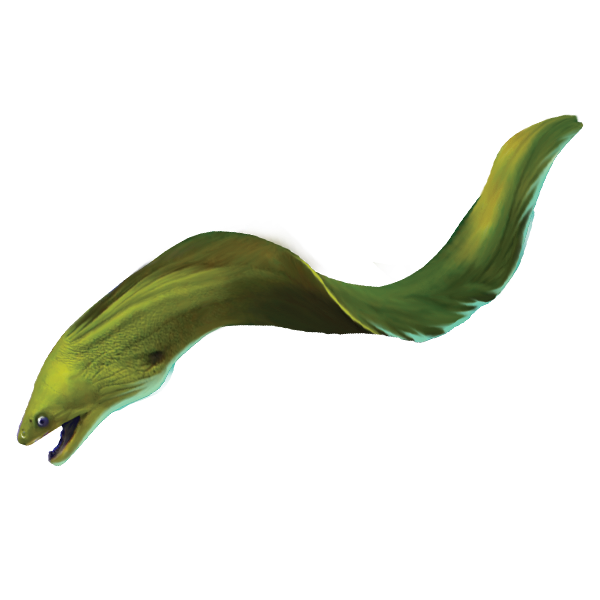Gymnothorax funebris
Green Moray
Maximum Size:
8 ft (2.5 m), 65 lbs (30 kg)
Longevity:
Unknown
Typical depth:
3–164 ft (1–50 m)
Behavior:
Green morays are solitary animals that hide in reef cracks and crevices during the day. At night, they prey on fish, octopuses, crustaceans and even other eels, primarily using smell to hunt as their eyesight is poor.
Predators:
Unknown, possibly barracuda.
Did you know?
In order to breathe, green morays must constantly open and close their mouth to move water through their gills. This action gives moray eels a threatening appearance but they rarely attack unless provoked.
WARNING!
Moray eels have sharp teeth that can produce a painful wound, but thankfully they rarely attack unless provoked. There is evidence that the bite of some morays may contain toxins that increase pain and bleeding, but further research is needed. Although all morays can bite, larger species such as the green moray can cause more severe injuries than smaller species.
TREATMENT
If bitten, exit the water as soon as possible. Treat the wound by immediately cleaning the affected area with soap and water. Apply pressure to reduce the bleeding, then apply a topical antibiotic before dressing the wound to reduce the risk of infection. Sutures may be required in some cases. If in doubt, or if the wound becomes infected, seek medical attention.
MEDICAL DISCLAIMER
The treatment advice contained in this book is meant for informational purposes only and is not intended to be a substitute for professional medical advice, either in terms of diagnosis or treatment. Always seek the advice of your physician or other qualified health provider if you are injured by a marine organism. Never disregard professional medical advice or delay seeking it because of something you have read in this book.

